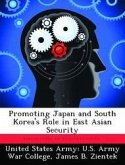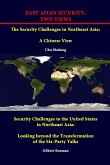Divided in 1945 between the United States and the Soviet Union, Korea's status was as much a testament to the Cold War as one of ideology. With the unifications of Vietnam and Germany, Korean unification appears entirely possible, either through absorption or through force. However, even with the removal of superpower competition, Korea appears to be no closer to unification than it was 50 years ago. Korea's division continues today for partly ideological, partly practical, but mostly regional issues. In North-east Asia both North and South Korea, China, Japan, Russia and the United States all at one time or another supported a unified Korea. The type and nature of that Korea is what divides the regional powers. A Korea unified peacefully will resemble a bigger South Korea based on historic Korean regionalism, gross national products, education, and raw population. In every area of comparison, South Korea dominates its northern counterpart. Based on security, competition, and debt relations only the United States and South Korea logically support peaceful unification. At best, Japan is ambivalent, while Russia sees a loss of revenue through arms sales and China fears a US presence on its border. For the near future, Korea will not unify.
Hinweis: Dieser Artikel kann nur an eine deutsche Lieferadresse ausgeliefert werden.
Hinweis: Dieser Artikel kann nur an eine deutsche Lieferadresse ausgeliefert werden.








